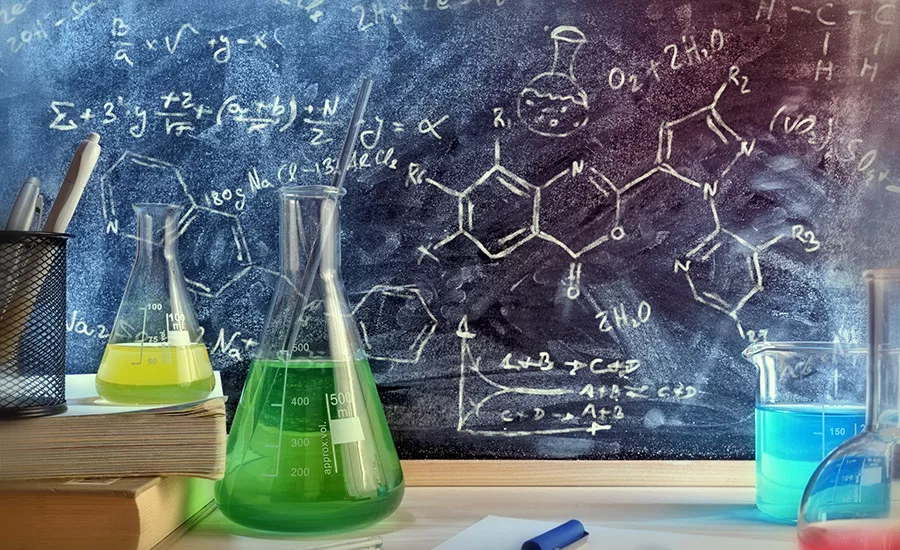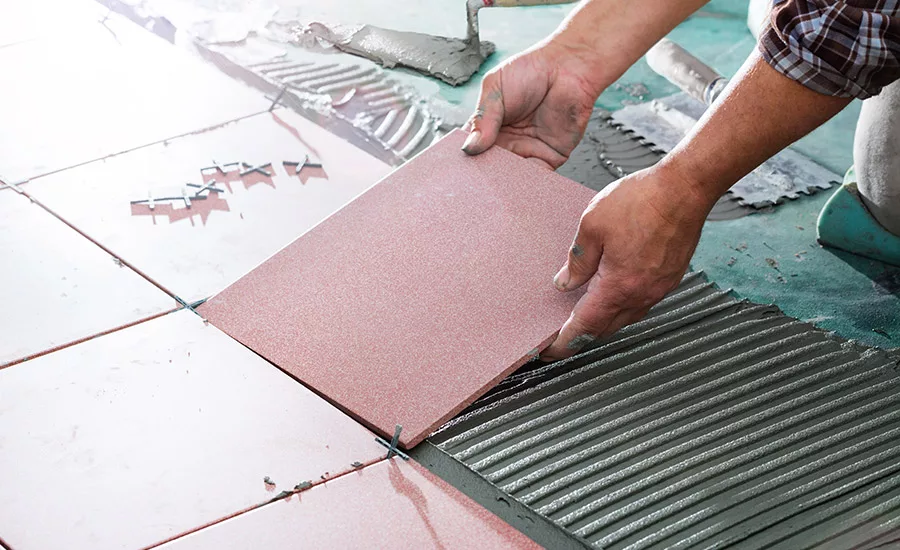Adhesive and Sealant Raw Materials Roundup
In 2023, raw materials suppliers launched new products to help formulate the latest adhesives and sealants that meet the evolving needs of customers.

Image courtesy of Davizro / iStock / Getty Images Plus.

Image courtesy of moloTavani / iStock / Getty Images Plus.

Image courtesy of artisteer / iStock / Getty Images Plus.

Image courtesy of Jamakosy / iStock / Getty Images Plus.
While experiencing significant challenges over the past four years, the chemical industry is showing signs of stabilization. In its most recently released report, the American Chemistry Council’s (ACC) Global Chemical Production Regional Index states that production was trending higher in December by 0.1%, with China leading in terms of gains. The U.S. Chemical Production Regional Index rose 0.4% in December after seeing a 0.3% decline in November. The index saw global output increasing in all segments, while basic chemicals and specialty materials posted the highest gains.
“In the U.S., chemical output rose in all regions except the Gulf Coast. There were signs of recovery in the output volumes of agricultural and coatings and other specialty chemicals that offset ongoing weakness in basic industrial chemicals and synthetic materials,” said Martha Moore, ACC’s chief economist.
As chemical producers deal with global political and social challenges, their primary task is providing new technologies. Innovation in adhesive and sealant technology is somewhat of a moving target, as regulatory issues and consumer demand dictate priorities. As a result, adhesive and sealant companies are always looking for new tools to help them develop products that answer these needs. In 2023, raw materials suppliers to the adhesive and sealant industry launched new products that will help manufacturers develop products to meet the ever-evolving needs of their customers. Here is a sampling of the new products introduced in 2023.
Polymeric Binders
Three new polymeric binders from WACKER are designed for formulating tile adhesives and mortars in exterior insulation and finish systems (EIFS). When added to dry-mix mortars, VINNAPAS® 4419 E, VINNAPAS 8819 E, and VINNAPAS 4449 E produce a creamy consistency, making the resulting product easier for users to process. They also improve slip resistance, wetting capability, and open time. Geared primarily toward improved workability, the new dispersible polymer powders have been modified in a way that lowers the viscosity of fresh mortar up to 20%. VINNAPAS 4419 E and VINNAPAS 8819 E also improve the ability of tiles to resist sagging in the mortar bed. At the same time, the new dispersible polymer powders optimize the degree of wetting on the back of the tile. VINNAPAS 4449 E is suitable for adhesive mortars used for exterior insulation and finish systems. The benefits of this product include its ability to form a particularly powerful bond within the layer system, balancing the forces that arise from temperature fluctuations and other influences. It also makes the mortar more resistant to abrasion and improves its flexural strength.
Additive for Sustainable Composite Tile Adhesives
Because of its lower carbon footprint (composite cement replaces “clinker,” the key component of CO2 emissions, with cellulose ethers), the use of composite cement is growing. However, formulations from composites can negatively impact strength development. The next generation of modified methyl cellulose derivatives for premium cement adhesives, Culminal™ GAP (Green Aware Performance), from Ashland is a high-performing cellulose ether used in cementitious-based systems. It uses new methylcellulose chemistry to address the impact strength issue by reducing the impact on cement hydration, resulting in better strength development from the high early to final tensile strength phase.
Recycled Content Polyester Polyol
INFIGREEN® 420R, a recycled content polyester polyol from Emery Oleochemicals, is engineered from post-industrial waste. It offers autocatalytic properties that make the polyol well suited for a variety of urethane systems, a unique backbone that imparts strong mechanical and hydrolytic resistance properties and is a 50% Certified Biobased Product by the USDA BioPreferred® Program. It is also compatible for a multitude of urethane applications.
Biobased TCD Alcohol DM
Oxbalance TCD Alcohol DM from OQ Chemicals is a sustainable alternative to conventional TCD Alcohol DM (Tricyclodecane Dimethanol). The ISCC PLUS-certified product is made from more than 70% biobased and biocircular feedstocks. It is suitable for high-performance technical polymers, adhesives, coatings, and paints for the food packaging, electronics, and automotive industries without compromising performance or quality.
Renewable Polyol
A new grade of 2-ethylhexanol (2-EH) from Perstorp is available with 100% renewable, traceable mass-balanced carbon content. Developed based on both physical and chemical traceability, 2-EH Pro 100 is designed to minimize the carbon footprint throughout the value chain, while supporting sustainable sourcing of renewable and recycled raw materials. It is an ISCC PLUS certified product, which means that all sustainable raw materials are ISCC PLUS or ISCC EU certified in all parts of the value chain all the way back to the point of origin.
Sustainable Resins
Röhm’s DEGALAN® proTerra resins are partially made from recycled PMMA (polymethylmethacrylate), offering reduced CO2 emissions compared to established resins made from virgin, fossil-based raw materials. Suitable for use in adhesive and coating formulations, the new product range will be manufactured with 35% material from recycled PMMA, leading to an approximate 15% reduction in CO2 emissions. They provide a drop-in alternative for solvent-borne coatings and have high solids with low solvent content, excellent weatherability and appearance, low viscosity, and are quick drying.
Flame Retardant
Offered by Daihachi Chemical Co. Ltd., PX-200 is a solution for flame retardancy of hot-melt adhesives. A halogen-free and TPP-free flame retardant, it has a low melting point (92 ˚C min) suitable for all types of hot melt adhesives, especially reactive polyurethane hot-melt adhesives and hot-melt pressure-sensitive adhesives. In the 120 °C or so temperature range, it melts, thus offering high dispersibility. PX-200 does not require high dosages like hydrated metals, so formulators do not have to worry about the degradation of the adhesive's physical properties by adding flame retardants. It is possible to achieve V-0 at about 20%, and depending on the formula, it may be possible to reduce it even more. It has also been used with CoPES (co-polyester) hot melt adhesives and PA (polyamide) hot melt adhesives with V-0 results. A condensed phosphate ester, its granular form makes it less likely to scatter, and unlike BDP (bisphenol A bis(diphenyl phosphate)) and RDP (resorcinol bis(diphenyl phosphate)), it is completely TPP-free. This feature contributes not only to environmental friendliness but also to improved heat resistance. It is also halogen-free.
Nonmigratory Phosphate Methacrylate Monomers
VISIOMER® HEMA-P 100 from Evonik is a phosphate methacrylate monomer that is nonmigratory, with long-lasting effects. Incorporated by polymerization, it provides transparent flame retardancy, improves adhesion, and reduces corrosion. An effective adhesion promoter and anti-corrosive agent, it can improve dispersibility and act as a complexing agent. The versatile VISIOMER HEMA-P can be used as a monomer for emulsion and solution polymers, vinyl ester and unsaturated polyester composites, acrylic adhesives, acrylic water-proofing resins, and cast PMMA. Applications include coatings for wood, textiles and paper, direct-to-metal (DTM) coatings, structural adhesives, waterproofing roofs and parking decks, and architectural cast PMMA. Unlike traditional additives, it provides flame retardancy without compromising transparency or mechanical properties.
Resin for Pressure-Sensitive Adhesives
Formulated for permanent and removable pressure-sensitive adhesive applications, EPS® 2133 is an all-acrylic polymer from Engineered Polymer Solutions made without APEO surfactants. With a broad formulation latitude, it delivers the adhesive and high-shear holding strength required for such applications. Performance attributes include: 180° peel (PSTC-101) 2.0 lbs/in; loop tack of (PSTC-16) 2.0 lbs/in2; and static shear (PSTC-107) >10,000 minutes (1”x1”x1 kg).
Hydrophobic Dispersions
WACKER has developed two new hydrophobic dispersions that improve crack bridging in water-repellent sealing slurries for building waterproofing. VINNAPAS® 754 ED is an additive for cementitious two-component sealing slurries that helps the slurries retain their ability to bridge cracks even at temperatures down to -5 °C. VINNAPAS 764 ED makes this possible down to -20 °C and meets the requirements of class O2 of the EN 14 891 standard, which stipulates flexibility and crack-bridging ability down to -20 °C. The temperature at which the material becomes rigid is even around 30 °C. At -5 °C, VINNAPAS 754 ED offers sufficient flexibility and crack-bridging ability, therefore meeting the requirements of class O1 of the standard. The product also has a lower viscosity. As a result, two-component cementitious sealing slurries can be processed even more easily with this product. Both products are terpolymers based on vinyl acetate, ethylene, and vinyl ester that do not require any additional solvents, plasticizers, or film binding agents. According to the Federal Institute for Risk Assessment (BfR), they are therefore suitable for contact with drinking water. Applications include two-component waterproofing slurries.
Acrylic Latex Binder
LIGOS™ C 9375 from Trinseo is the company’s first all-acrylic latex binder for building and construction applications. Specifically designed for cementitious applications in the building and construction market, its performance offers strength, weatherability, and workability. Applications include hydraulic cement mixtures, exterior insulation and finishing systems (EIFS), cementitious repair, decorative overlays, tile grout, and sprayable and patching mortars/stuccos.
Silicone Anti-foam Compound
BRB International's Akasil® ADP 300 is a low-viscosity silicone anti-foam compound with an active content of 100%. Developed specifically for non-aqueous systems, it has an effective foam control record at low concentration in the following applications: electrical/electronic coating, chemical industries (adhesives, resin polymerization, etc), petroleum processing (gas scrubbing, glycol unit, etc), and formulating anti-foam emulsions.
Learn more about the latest products introduced to the adhesives and sealants industry at www.adhesivesmag.com/topics/2666-adhesive-sealant-products.
Looking for a reprint of this article?
From high-res PDFs to custom plaques, order your copy today!



